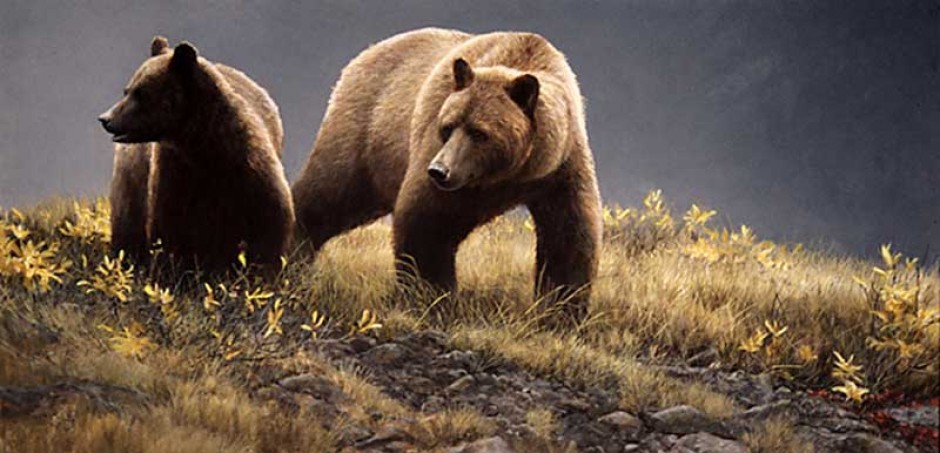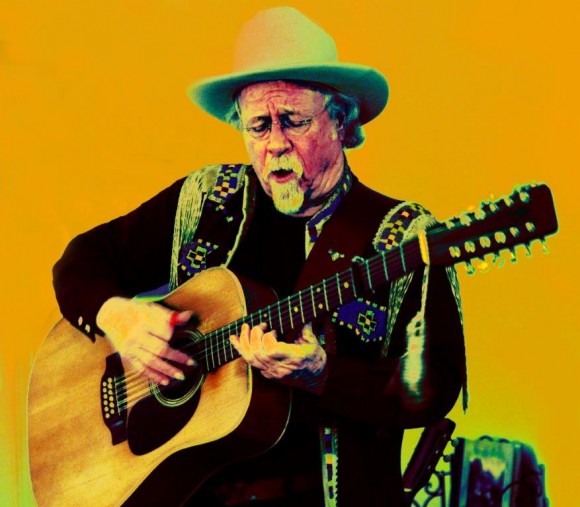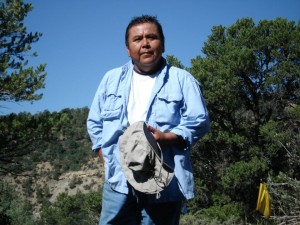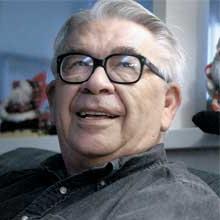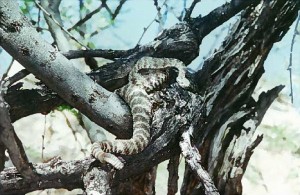Note: The events that are described below occurred in 2006. I decided to create a written account of these encounters in the event that someone might find them to be of interest. The subject of Bigfoot often comes up in the classes I teach. Everyone, it seems, has a Bigfoot story. This is my contribution to the record.
For several years I lived in a rented house along Haxton Way on the Lummi reservation outside of Bellingham, Washington. Haxton Way runs east to west and ends near Lummi Point close to the Lummi Island ferry. My house was located a few feet off of the road on the south side. Behind my house was about 100 yards of heavy, dense woods, and beyond that, Lummi Bay.
My first Bigfoot experience took place on Tuesday, September 23, 2009. It was approximately 3:30 to 4:00 am. I was scheduled to take the 5:40 flight out of Bellingham International Airport to Seatac on route to talk I was giving the next day at Fort Lewis College in Durango, Colorado. It was pitch dark outside, a cold, crisp, beautiful, and almost cloudless morning. I was carrying my travel bags out to my truck when I heard it, a loud piercing cry that was so loud and clear it literally shattered the dark stillness of that early morning. It came from the woods behind my house, I estimated not much further than 50 yards away. The vocalization itself was one long flowing sound that lasted perhaps five seconds, paused for perhaps another two or three seconds, before repeating itself identically for a second time. The cry also served to wake up every dog seemingly within a one mile radius who collectively filled the morning air with their own barks and howls. What has a few seconds earlier been complete silence, suddenly turned into loud chaos. I immediately turned off my porch lights and for perhaps the next 15 minutes sat in the darkness hoping to hear the cry again. But whatever creature made the sound, remained quiet. After about 10 minutes, the last of the dogs had quieted down. All was again silent.
I admit that the first thought that came to my mind upon hearing that scream was “that was a primate”, the second thing that came to my mind was “Bigfoot.” It could be nothing else. The sound that I heard that morning could best be described as a long, drawn out “howling” cry. It was completely and totally unique compared to any local animal or bird sound that I have ever heard. In time, I thought of every other possible creature it could have been, and immediately ruled out each. The nearest animal vocalization that I can compare it to – and indeed it is very close comparison -is that of the cries made by Howler monkeys in the jungles of South America.
Less than one week later, Bigfoot paid me a second visit.
On the following Saturday, September 27, I had gone pheasant hunting at nearby Lake Terrell. It had been a good day and I returned home with two nice rosters . To the right of the driveway in front of my house is a small clearing where the septic tank was buried. There at the edge of the wood and only 20 feet from Haxton Road I had a pine log set up where I routinely cleaned my birds. I would then thrown the remains – guts and feathers – into the woods where the raccoons and opossums could carry them off. Upon returning from my hunt about noon, I went to the clearing to clean my birds, had just finished the first when suddenly “all hell broke loose” in the woods less than 20 feet in front of me. The focal point of this chaos was a rather large tree that began to swing violently from side to side. In terms of size, I would estimate that the trunk of this tree was perhaps ten inches in diameter and “something” was shaking it back and forth as if it was a sapling. Branches and leaves began falling to the ground from this tree and other smaller ones around it that were being pounded. Whatever had been shaking the tree stopped for a few moments and I could hear the loud cracking of wood as if someone was breaking branches over their knee or beating the ground with them. I jumped to my feet knife in hand, not knowing what would come next and fully expecting that something was about to explode out of the brush to attack me. Although all of this disruption was taking place less than 20 feet in front of me, I could see nothing due to the density of the brush and foliage. Robin, my Labrador retriever, who had been lying on the ground next to me chewing on a pheasant wing, also had leaped to his feet. Although he never growled or made any sound, he stared intently into the woods and cautiously began to back up toward the house. For a few seconds things quieted down, then suddenly the large tree began to once again be shaken violently from side to side, more limbs and leaves fell to the ground, and all of this accompanied by the sound of more breaking wood and brush. Deciding that discretion was the better part of valor and that my small skinning knife was certainly no match for whatever creature was in front of me, I gathered up my partially cleaned birds and began a hasty retreat to the house. Robin was already on the porch waiting for me to open the door.
Interestingly, the animal itself made no sound, no vocalization of any type.
I have no doubt that this second incident was also a Bigfoot encounter. Again, I would be at a loss to offer a better alternative theory. This was not a simple matter of surprising some large animal like a deer or bear (In reality bear sightings on the Lummi reservation are far less frequent than Big Foot sightings) and having the it loudly breaking brush as it flees to safety. Whatever animal I encountered that morning was not fleeing. Although its actions were benevolent, there was a clear intent to scare me off and/or to assert dominance. In both cases, it worked.
Prior to the encounters I have just described, I had never given much thought to Bigfoot, or Sasquatch, as some call this creature. I have since come to find that my house was located is an area well known for Bigfoot sightings. The Lummi and other Coast Salish people do not question its existence. Many of my students, for example, have had a Bigfoot encounters. Almost everyone knows someone who has seen a Bigfoot.
In recent years it seems like the general public has become obsessed with Bigfoot, especially in regard to proving or disproving its existence. Almost every television network seems to have a series dedicated to “finding” Bigfoot. The Syfy Channel continues to release movie after movie based on the theme of man-eating Bigfoots that terrorize teams of scientists or a camp full of teenagers. – both well-deserving targets. Most recently a hunter from Texas (Where else?) claims to have killed a Bigfoot.
My own opinion? I personally know that Bigfoot is real. I believe it to be a spiritual being, an entity that has powers beyond our imagination, including the power to shape shift – to change forms. It is for this reason we will never be able to scientifically prove their existence. I think this is a good thing. I think that there are things that we do not need to know, mysteries that should forever remain mysteries.
